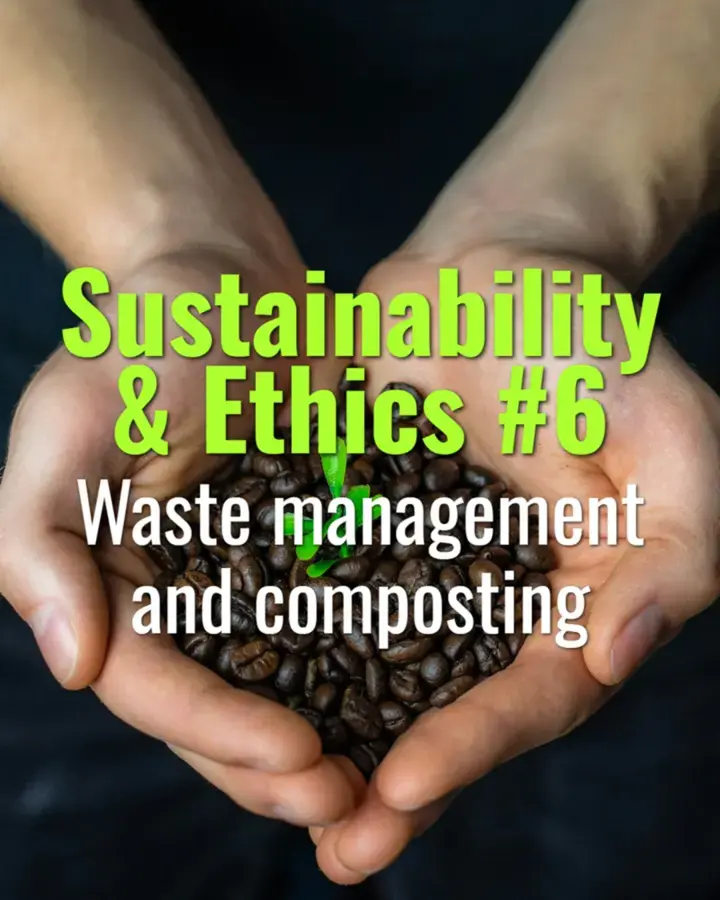Waste management and composting
How waste is generated across the coffee supply chain, strategies for managing it responsibly, and the role of composting in circular sustainability.
- Coffee Basics Nerds
- 1 min read
Article 6 of 12 in Sustainability & Ethics/

Sources of Coffee Waste
- At Farm & Processing:
- Pulp, mucilage, parchment from wet and dry processing.
- Wastewater with high organic load.
- At Roastery:
- Chaff (silver skin flakes) from roasting.
- Packaging waste.
- At Café/Consumer Level:
- Spent coffee grounds.
- Single-use cups and packaging.
Environmental Risks of Poor Waste Management
- Coffee pulp and wastewater can pollute rivers if untreated (low oxygen, fish kills).
- Methane emissions from decomposing organic waste.
- Landfill waste from single-use packaging adds to carbon footprint.
Composting as a Solution
- Coffee Pulp & Husk: Rich in nitrogen, can be composted into organic fertilizer.
- Spent Grounds: High in organic matter; beneficial as soil amendment.
- Roaster Chaff: Easily incorporated into compost piles.
- Composting improves soil fertility, moisture retention, and carbon sequestration.
Other Waste Management Strategies
- Anaerobic Digestion: Coffee waste converted to biogas for energy.
- Vermicomposting: Earthworms break down spent grounds into nutrient-rich castings.
- Recycling & Reuse: Cups, pods, and packaging redesigned for recyclability or biodegradability.
Industry & Café Practices
- Some roasters and cafés partner with farms or community gardens to donate spent grounds.
- Zero-waste cafés promote reusable cup programs and compost collection bins.
Summary
Coffee waste—from pulp to spent grounds—can be a resource instead of a pollutant. Composting and other circular solutions turn organic waste into fertilizer or energy, reducing environmental harm and closing sustainability loops.